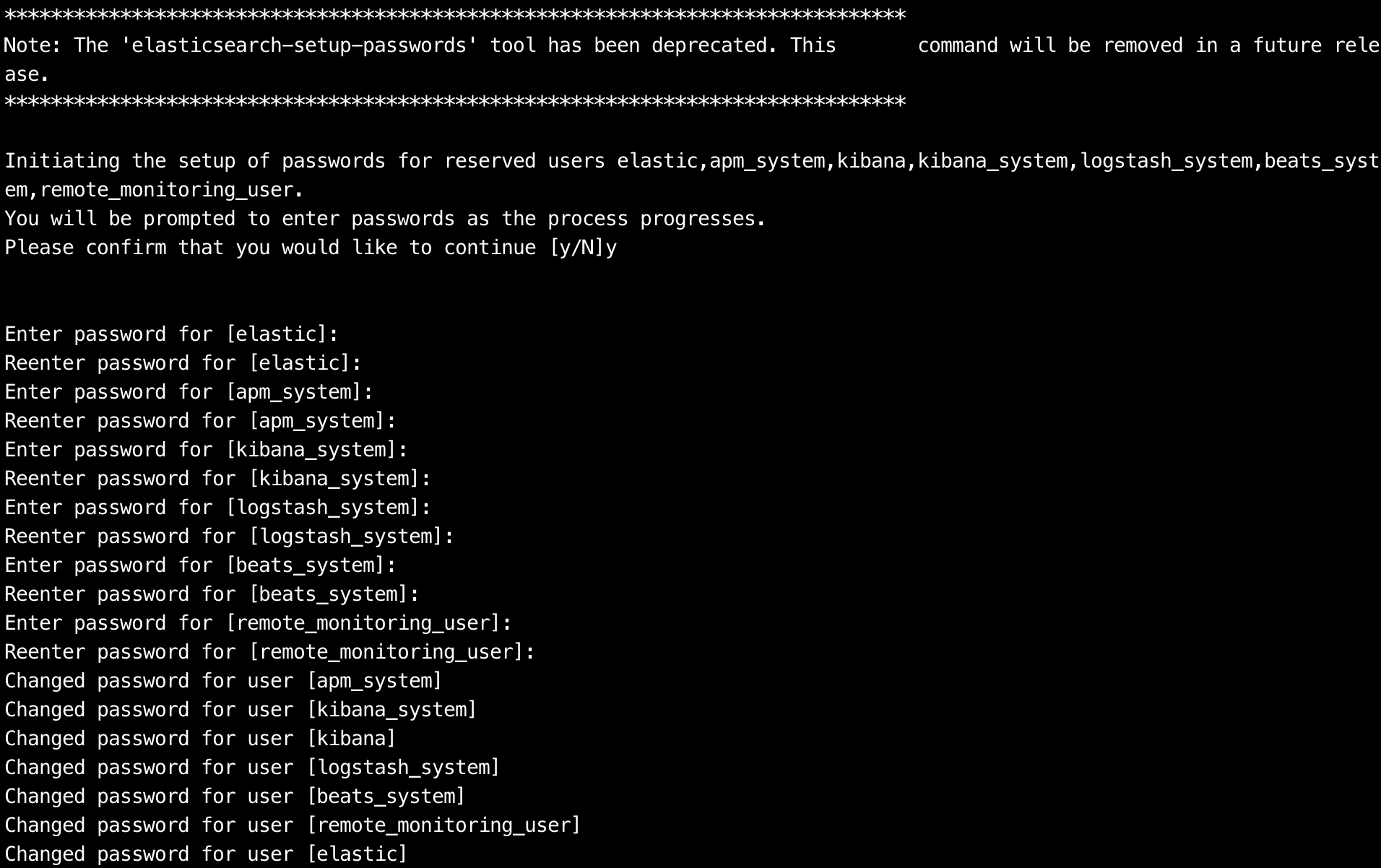1. 不使用用户名密码连接
Elasticsearch8.x默认会开启安全连接,因此我们在第一次安装配置Elasticsearch时需要将安全策略关闭。关闭方式就是修改elasticsearch.yml文件,在文件中添加:
xpack.security.enabled: false
xpack.security.http.ssl.enabled: false
使用pip install elasticsearch安装Python的关于es的依赖包,安装完成之后查看:
>> pip list | grep elasticsearch
elasticsearch 8.2.0
在Elasticsearch7.x版本中,Python使用下面的方式连接es:
from elasticsearch import Elasticsearch
es = Elasticsearch([{'host': 'localhost', 'port': 9200}])
print(es)
在es的8.x版本中,这种方式将不再适用,新的方式如下:
from elasticsearch import Elasticsearch
es = Elasticsearch('http://localhost:9200')
print(es)
2. 添加数据
2.1 方式一
data = {
"name": "赵敏",
"age": "16",
"sex": "f",
"address": "大都",
"sect": "朝廷",
"skill": "无",
"power": "40",
"create_time": "2022-4-18 14:34:47",
"modify_time": "2022-4-18 14:34:52"
}
response = es.index(index="example_index", body=data)
返回结果:
{
"_index": "example_index",
"_id": "Xhw8pIAByjnVJYyzhLSI",
"_version": 1,
"result": "created",
"_shards": {
"total": 2,
"successful": 1,
"failed": 0
},
"_seq_no": 0,
"_primary_term": 1
}
2.2 方式二
data = {
"name": "灭绝师太",
"age": "49",
"sex": "f",
"address": "峨眉山",
"sect": "峨眉派",
"skill": "倚天剑",
"power": "70",
"create_time": "2022-05-08 23:16:53",
"modify_time": "2022-05-08 23:16:59"
}
resp = es.index(index="example_index", document=data)
print(resp)
返回结果:
{
"_index": "example_index",
"_id": "Xxw-pIAByjnVJYyz57TI",
"_version": 1,
"result": "created",
"_shards": {
"total": 2,
"successful": 1,
"failed": 0
},
"_seq_no": 1,
"_primary_term": 1
}
这两种方式效果是一样的,document方式是8.x中提出的。
配置Elasticsearch只有基本安全
在有些时候,我们只需要用户名密码的配置,并不需要https的相关配置。需要在第一次使用Elasticsearch的时候进行配置:
xpack.security.enabled: true
xpack.security.http.ssl.enabled: false
然后运行bin/elasticsearch,启动es,然后启动完成es之后,运行./bin/elasticsearch-setup-passwords interactive修改密码:

在启动kibana的时候,需要修改config/kibana.yml配置文件中的用户名和密码:

这样使用kibana就可以通过用户名和密码来访问了.
使用python连接:
from elasticsearch import Elasticsearch
es = Elasticsearch('http://localhost:9200', basic_auth=('elastic', '123456'))
print(es)
因为用户elastic是超级用户,所以可以用它来进行登录认证,当然也可以新建一个用户。
还可以通过下面的这种认证方式进行认证:
es = Elasticsearch('http://elastic:123456@localhost:9200')
print(es)
配置https的连接
不需要修改Elasticsearch的配置文件,他的默认的方式就是https的方式,因此直接进行解压即可。然后启动es。出现下面的信息:

第一个是超级用户elastic的默认密码。
第二个是证书的fingerprint
第三个是kibana的临时token。如果kibana的token超时之后,可以使用命令./bin/elasticsearch-create-enrollment-token -s kibana重新生成token。
es的默认的证书位置在./bin/config/certs/http_ca.crt。
方式一 fingerprint
openssl x509 -fingerprint -sha256 -in ./http_ca.crt

from elasticsearch import Elasticsearch
CERT_FINGERPRINT = "A5:2D:D9:35:11:E8:C6:04:5E:21:F1:66:54:B7:7C:9E:E0:F3:4A:EA:26:D9:F4:03:20:B5:31:C4:74:67:62:28"
# Password for the 'elastic' user generated by Elasticsearch
ELASTIC_PASSWORD = "<password>"
client = Elasticsearch(
"https://localhost:9200",
ssl_assert_fingerprint=CERT_FINGERPRINT,
basic_auth=("elastic", ELASTIC_PASSWORD)
)
client.info()
这种方式需要Python3.10版本以上,而且如果使用aiohttp则无法访问。
方式二证书
证书的位置在elasticsearch-8.2.0/config/certs/http_ca.crt路径下,因此只要将这个证书拿到就可以了。
from elasticsearch import Elasticsearch
es = Elasticsearch('https://192.168.171.81:9200',
basic_auth=('elastic', 'I3h=htUOY_*Q2Sl==M3s'),
ca_certs = './http_ca.crt',
verify_certs=True)
data = {
"name": "灭绝师太",
"age": "49",
"sex": "f",
"address": "峨眉山",
"sect": "峨眉派",
"skill": "倚天剑",
"power": "70",
"create_time": "2022-05-08 23:16:53",
"modify_time": "2022-05-08 23:16:59"
}
resp = es.index(index="example_index", document=data)
